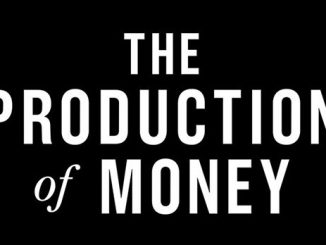
Reviewed by J. D. Evans
Alami and Dixon’s The Spectre of State Capitalism is a careful discussion of a topic often dealt with in platitudes and sound-bites. The authors cover uses of ‘state capitalism’ as an ideological tool, as well as serious scholarly work on the subject. They accept that ‘all capitalism is state capitalism to some extent,’ and ‘the new state capitalism may not be so new after all’ (5). But, at the same time, they detail the changes in the nature of the global economy, and argue that they must be reckoned with – that is, not just described, but explained.
The authors define state capitalism as an expansion of the state’s role in the world economy through state-capital hybrids (such as sovereign wealth funds, state enterprises and banks embedded in states), and increasingly statist policies (including industrial and development policies and economic nationalism). They argue that this expansion of the state’s economic and political role is not contingent. It is ‘structured by deep-seated, secular transformations’ in global capitalism (15). The economy itself they understand as ‘a world-historical totality’ (13), and not just a collection of disparate institutions and states.
Alami and Dixon compare their own work to previous scholarship clearly. Business school scholarship investigates state capitalism as a form of organization and governance at the level of the firm, but rarely considers how firms relate to the state, why the state involves itself in the economy, or puts increasing state involvement in any historical context. Comparative capitalism takes states as the unit of analysis, rather than the firm, and is concerned with differences between states’ economies. This approach looks more at state intervention in economies, how the state and businesses relate to each other and the state itself. But Alami and Dixon argue that starting with the state as the unit of analysis makes it hard to ‘explain the transnational dimensions of state capitalism’ (33).
Alami and Dixon argue that these problems result from three flaws: i) the lack of a theory of the capitalist state; ii) a lack of attention to history; and iii) a lack of attention to the geographies of state capitalism. So, the American military is rarely discussed as an example of state capitalism, nor is quantitative easing, but it is hard to know what is a part of the state if not them; properly understanding what the state is can help us to avoid such blind-spots. The failure to think historically shows up in periodizations, or in Polanyian arguments that we are just seeing a swing of the pendulum away from disembedded neoliberalism towards a more socially embedded economy. Neither of these arguments can explain why the phenomena they describe are taking place now. Finally, geography often enters the study of state capitalism only at the level of the nation-state. Here again, we are not given any convincing explanation for why state capitalism seems to be expanding; instead, we are just told that such-and-such a nation-state chooses mercantilist policies, and that is why we have seen a growth in mercantilist policies. We must rather explain the global, geographical context of those policy choices.
Alami and Dixon try to overcome these problems with their ‘problématique of state capitalism.’ They argue that we should see state capitalism not as a category, but as a puzzle; that we should relate state capitalism to ‘other fundamental political economic categories’ such as the state and capital accumulation; and that we should think about state capitalism historically and geographically in terms of ‘uneven and combined state capitalist development’ (50-51). Doing so will also make state capitalism a critical concept. We can use it to show how the ‘normal’ separation of state and economy is historical and political. In short, Alami and Dixon aim to accurately describe the present; to explain how and why our global economy exists in the form that it presently does; and to make possible a critique of the present and its history.
Alami and Dixon’s theory of the state incorporates well-known Marxist approaches (55). They see individual states as necessarily capitalist. States try to make capital accumulation possible at the global level, while also trying to improve their own economic position by attracting capital to the domestic market. And they do so amid ‘changing constellations of the international division of labor’ (67). The authors argue that the uneven growth of the global economy and those changing constellations are the necessary result of global capitalist development. These non-contingent economic changes cause the institutional and political differences studied by the literature of comparative capitalisms.
Alami and Dixon use this theory of the state and the global economy to investigate a huge body of data. States have used state capitalist strategies to deal with stagnation and overcapacity, a reduction in the demand for labor, an increasing surplus labor supply and the fragmentation of organized labor (80-81). These changes have led to slow growth, low investment and a savings glut. To cope with, or profit from, these changes, states have directly intervened in the production process (as with industrial policies and development banks); engaged in financial manoeuvres to protect firms from toxic assets and debt (as with quantitative easing); stabilized their economies by, for example, holding low-risk, liquid assets offshore; and disciplined their own populations through authoritarian policies, or the populations of other states through warfare.
All of these political economic actions, then, are the result of state actors trying to deal with large scale economic change at the global level. But their actions are not isolated. Alami and Dixon show how states act on and react to each other, by copying successful strategies, supporting each other or competing to strengthen their economic positions relative to other states. This appears as a global ‘spiral’ of mutual reinforcement between states (138), which, the authors argue, will lead to continuing ‘institutional heterogeneity’ (140).
The last section of the book looks at how the discourse of ‘state capitalism’ works in geopolitics and ideology. Alami and Dixon suggest, persuasively, that it is an updated Cold War rhetoric, which removes even the suggestion that there could be an alternative to global capitalism – since what they (outside the ‘liberal West’) now practice is ‘not a competing mode of production [but] a deviant, perverted version of the very selfsame one’ (182). Putting the difference between, say, China and the US in these terms allows people in both states to imagine an existential battle over principles where there is really only a power struggle, and thus legitimate the disciplining of the domestic population along with other ‘significant domestic policy adjustments’ (191).
Alami and Dixon conclude with thoughts about the future. They argue that there has been no clean break between neoliberal policies and state capitalism. Rather, neoliberalism ‘is gradually seeking to incorporate state ownership into its mainframe’ (237). At the same time, there is little reason to believe that we will soon return to the neoliberal projects of the 1990s. Both economic and climate crises demand increased state intervention. This may have at least one unintended, beneficial effect, if ‘the capitalist economy appears in plain sight for what it is […] an irreducibly political construct that is fundamentally […] underpinned by political power and public authority in the form of the state’ (252).
Much of this is convincing, but only if the reader accepts Alami and Dixon’s analysis of economic history. They frame the global economy in terms of the division of labor, declining productivity and slow growth – a very traditional-Marxist understanding of the realm of production. But are those terms adequate to the path of the global economy over the last few decades? A reader can agree that ‘state capitalism’ needs to be explained by a materialist analysis, without accepting that this particular analysis is the right one, or the most relevant. To play devil’s advocate, we might imagine a much simpler claim: neoliberal policies have enriched previously poor areas of the globe – most obviously China, but also Vietnam, the petro-states, India and so on. Those states have played the neoliberal game very well, using their own state institutions to draw in investment and increase their productivity, while exporting their goods to (supposedly) free markets in the US, Europe and so on. Now, though, the newly rich states are genuine competitors in higher-value production (technology, finance and so on). Therefore, the more performatively free-market states are forced to do away with their anti-statist position, and strengthen the role of state institutions in their economies. This then starts the ‘spiral’ that Alami and Dixon have identified. This analysis seems to explain ‘state capitalism’ just as well as the division of labor/fall in productivity/slow growth framework. The difference is that the latter suggests an orthodox Marxist faith in the coming crisis. For better or worse, the crisis never seems to arrive.
Of course, the book covers an enormous amount of ground already, and there is no space to defend this analysis in any depth. The Spectre of State Capitalism offers readers an alternative to the shallow discourse around state capitalism, while also showing how that discourse operates, and why it is successful. The authors bring together a theory of the state, an analysis of the global economy’s recent history and close attention to the actions of individual actors – states, firms and multilaterals – within that economy. The book provides a materialist explanation for the expanding role of the state in the economy. It is an excellent piece of scholarly work.
The Spectre of State Capitalism by Ilias Alami and Adam D Dixon
Publisher: Oxford University Press
ISBN: 13 978-0198925194




Be the first to comment